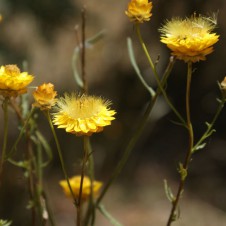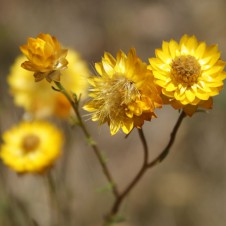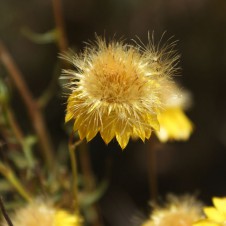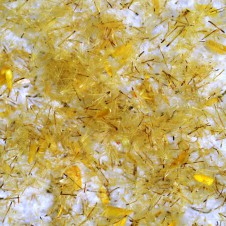General Desciption: An attractive perennial herb, to 80 cm tall, with narrow leaves along more or less erect stems, and topped by showy bright yellow papery daisy flower-heads. Leaves are long and narrow, up to 5 cm x 5 mm, and are sticky to the touch especially when crushed.
Flowers and Fruit: Large papery golden ‘daisy flower’, to 30 mm across, consisting of numerous, small, tubular florets in a central ‘button’, surrounded by a ray of numerous, overlapping, papery bracts. Flowering is from August to April. The seeds are narrow and dry, to 2 mm long, with a crown of yellow bristles about as long as the seed, they float in the wind like small parachutes.
Site Preference and Tolerances: Prefers full sun and well drained soil. Dies back during summer and reshoots in autumn.
Life Span: Perennial forb which can live for many years and readily self-seeds.
Wildlife Value: The Wood-white and the Imperial Jezebel Butterflies feed on mistletoe and are attracted by the Sticky Everlastings for nectar and protective cover. Provides both food for caterpillars and nectar for butterflies and provides food for insect eating birds.
Other Values and Uses: Responds to additional water over dry periods. If pruned in autumn this will promote bushy growth and prolong the life of the plant (may self-seed). Suits rockery, especially effective when mass planted in cottage style gardens. It is an excellent cut flower especially if picked in bud and hung upside down to dry.
Other Scientific Names: Bracteantha viscosa, Helichrysum bracteatum var. viscosum, Helichrysum viscosum
Other Common Names: Sticky Everlasting
Germination Information: Usually grows well in a few weeks without any treatment but germination increases with light so it is good to surface sow or only cover lightly with soil.




